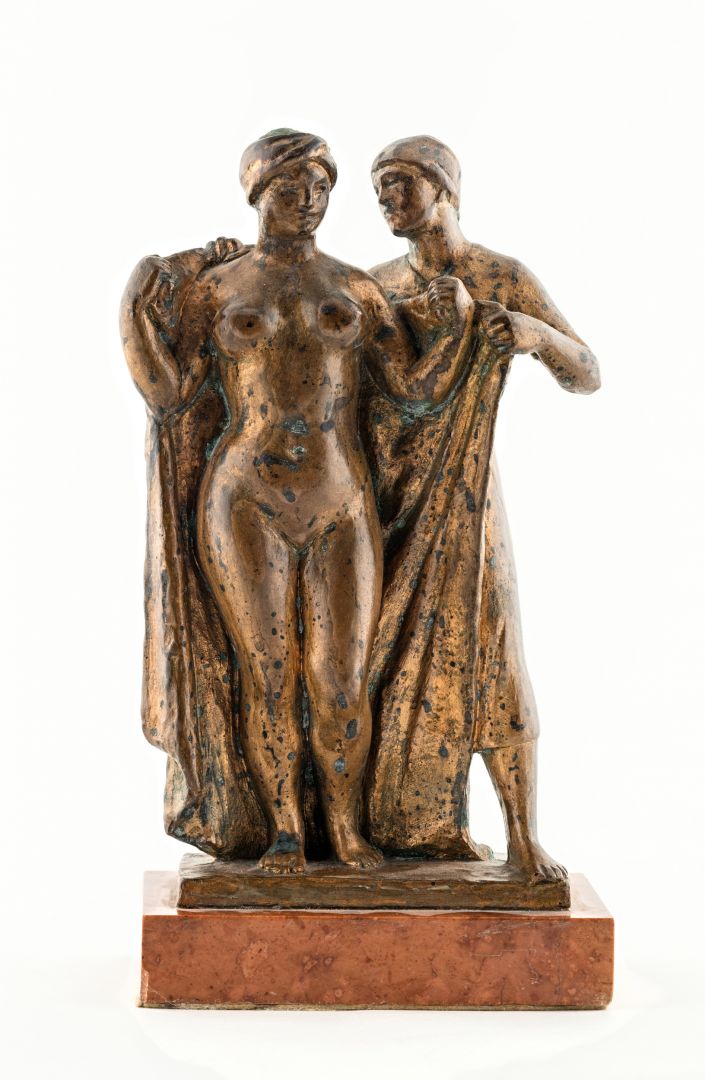Hall 2 - 4. view
Odalisque
PÁTZAY, PÁL (1896–1979)
Odalisque, 1949
bronze, height: 21 cm; marking at the base: Pátzay
Fine Arts Collection, Inv. No.: 81.13.
The time spent at the Collegium Hungaricum in Rome during 1928–1930 had a significant impact on the development of Pál Pátzay’s works. The artwork presented here is a beautiful example of the lasting effects of the Roman school on his art, as well as the harmony radiating from the timelessness of traditional classicism. The composition history of the Odalisque can be found in the two-figure sculpture titled Sisters, which he sculpted at a smaller scale in 1933 and later made its larger, public variation in 1942. The limestone statue depicting the intimate togetherness of two people can be found in Pécs since 1946.
The Odalisque represents Pátzay’s favourite type of Turanian woman, who forms an inseparable bond with the male figure standing behind her. The harem girl shows off her beauty after bathing with natural modesty, giving off the impression that she is just about to reveal her true self to us. The man is eagerly helping to put her veil on, his posture is full of tenderness and devotion. Even though the title of the artwork specifies a kind of depiction that has been popular for centuries, it is also somewhat evocative of the Birth of Venus given the contents and meaning of the composition, regardless of the original iconography. Its overall praise of female beauty leaves a lasting impression on the viewer.
A copy of the sculpture can also be found in the collection of the Hungarian National Gallery. The copy at Miskolc possesses special value as it remained in the possession of Pátzay until his passing. It was purchased from the widow of the artist by the Herman Ottó Museum in 1981.
Based on the description of Gertrud Goda
(In: A Herman Ottó Múzeum Képtára. Edited by: Andrea Pirint. Miskolc, 2004. 134. Cat. No.: 143.)
